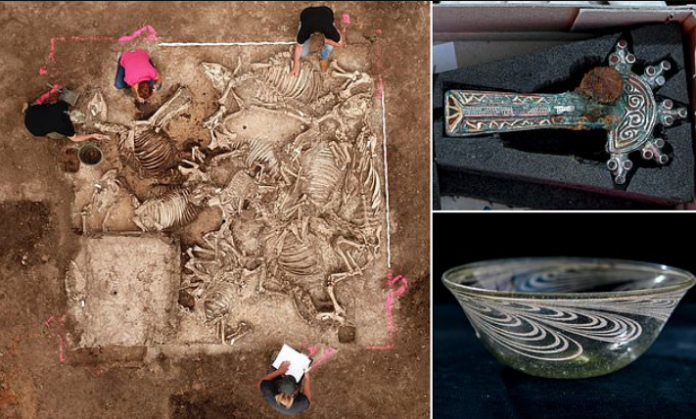In a remarkable archaeological discovery in Saxony-Anhalt, near Brücken-Hackpfüffel, Germany, researchers have unearthed a 1,500-year-old tomb believed to belong to a high-ranking Germanic lord or prince from the period of the Great Migration. This find, described as the most significant in Germany for the past four decades, reveals a complex burial site that includes a central tomb, a mysterious bronze cauldron, and the remains of six women who may have been sacrificed or chosen to accompany the lord in death. This discovery sheds light on the burial practices and societal structures of ancient Germanic tribes during a time of great upheaval following the fall of the Roman Empire.
Discovery of the Tomb: A Royal Court Unearthed
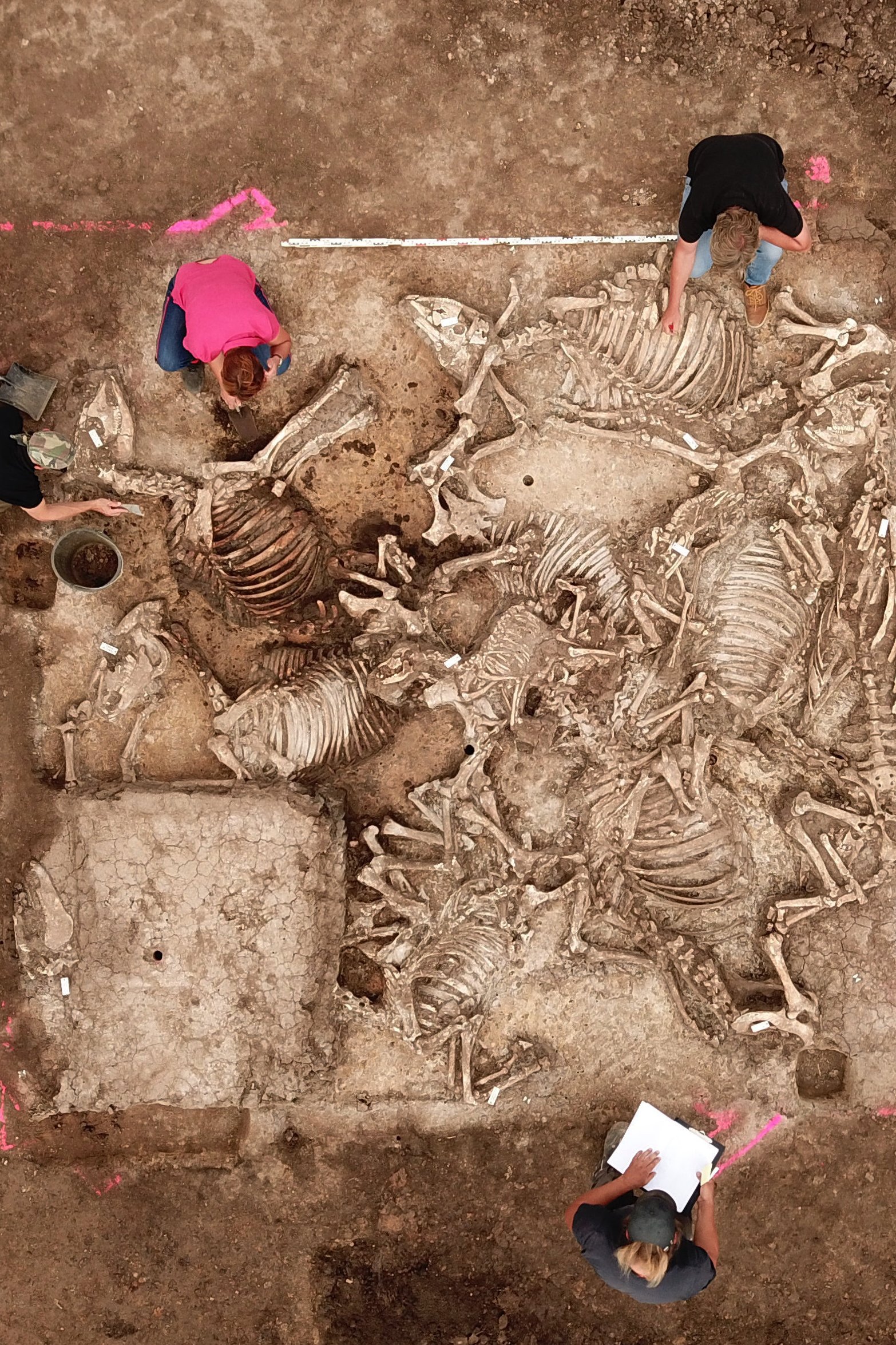
The discovery of the tomb was accidental, occurring when construction workers were clearing land for a new chicken farm. What they uncovered was no ordinary site, but the cemetery of a royal court, buried and hidden from view for centuries. Archaeologists were immediately called to the scene, and the site has since been kept secret to prevent looting. Despite the impressive nature of the discovery, the exact remains of the prince believed to be entombed there have yet to be found.
The Mysterious Bronze Cauldron and Sacrificial Women
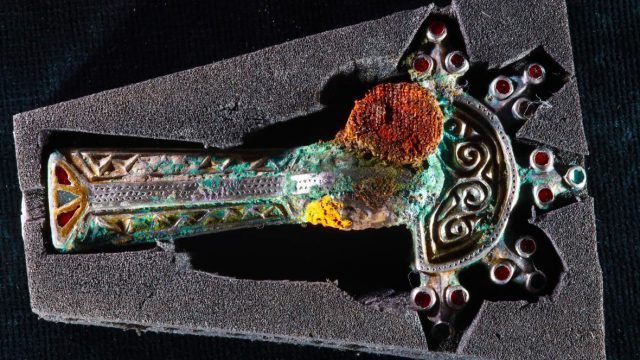
At the heart of the tomb lies a bronze cauldron, around which six women are buried in a radial formation, resembling the hands of a clock. This arrangement suggests a ritualistic significance, though whether these women were slain for the burial or chose to sacrifice themselves remains a mystery. The cauldron, likely central to the tomb’s history, has been carefully removed for further analysis, with speculation that it may contain the ashes of the prince himself.
A High-Ranking Burial: Evidence of Social Hierarchy

The central tomb, along with the remains of eleven animals including cattle, dogs, and horses, points to the high status of the individual buried there. Surrounding the central chamber are approximately 60 additional graves, believed to have been added later to honor the lord. These graves contain various artifacts, including a glass-decorated bowl, silver-gilded robe clips, a sword, and a gold coin from the Eastern Roman emperor Zeno, all of which further indicate the presence of a high-ranking Germanic tribe, possibly the Longobards, Alemanni, or Thuringians.
Immaculate Preservation: The Natural Protection of the Site
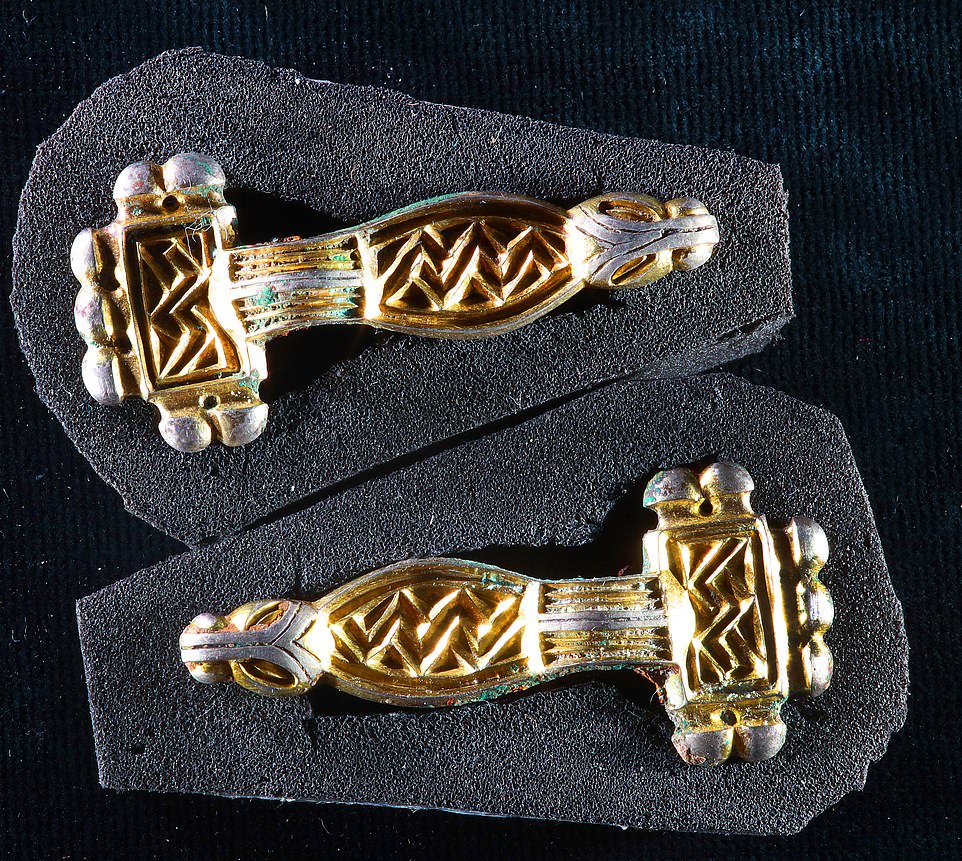
The burial site’s pristine condition is attributed to its unique location in a natural hollow, which was gradually covered by sediment over time. This natural layer provided protection from plowing and treasure hunters, keeping the graves and their contents intact. The preservation of these artifacts offers a rare glimpse into the burial customs and material culture of Germanic tribes during the Great Migration period.
Unlocking Secrets of the Past: Ongoing Analysis
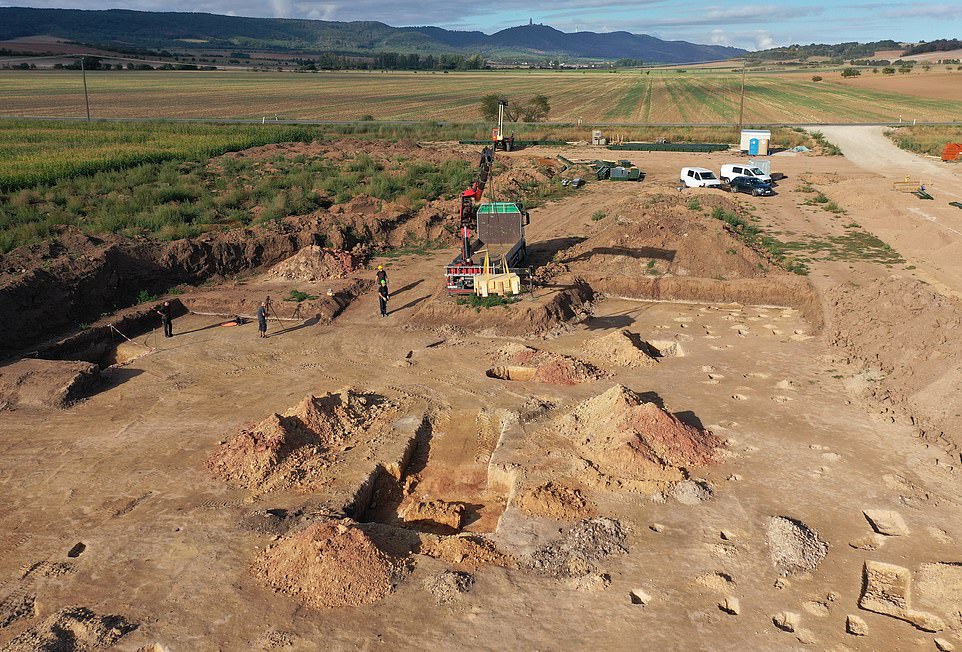
As archaeologists continue to analyze the bones and artifacts, they hope to uncover new insights into the lives of people during this turbulent period in history. The discovery of the tomb, with its unusual arrangement and rich assortment of grave goods, provides a valuable opportunity to understand more about the social hierarchy, burial practices, and cultural influences of the time.
Conclusion
The unearthing of the Germanic lord’s tomb in Saxony-Anhalt is a groundbreaking find that offers a rare and detailed glimpse into the world of ancient Germanic tribes during the Great Migration. The mystery surrounding the central bronze cauldron and the sacrificial women adds an intriguing layer to the discovery, raising questions about the rituals and beliefs of the time. As researchers continue to study the site, this discovery is sure to provide new insights into a pivotal period in European history, where the remnants of the Roman Empire gave way to the rise of new powers and cultural shifts.
